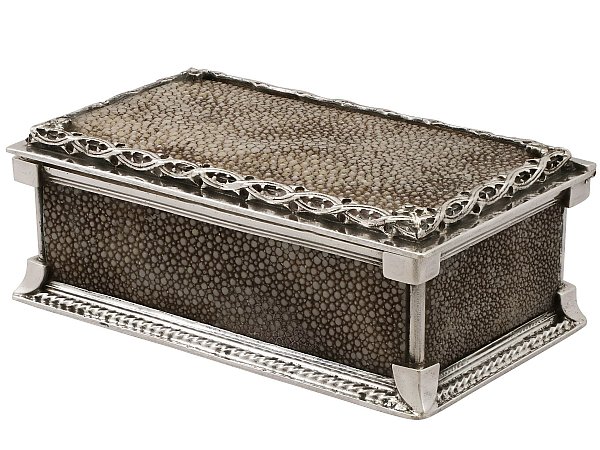What Is Shagreen?
What Is Shagreen?
Shagreen is a type of leather, typically linked to a range of ancient weapons. In China, shagreen has documented usage dating to the 2nd century and was used in bows, alongside wood and horn, during the Qing dynasty. There is also a plethora of examples of Japanese katanas, tachis, and wakizashis – swords and daggers of varying kinds – that have shagreen hilts. The benefit of this is that shagreen is very rough leather, and so it provides some texture that is easier to grip than smooth leather.
What Is Shagreen Made From?
Most often, shagreen is made from horse skin, such as the Asiatic wild ass. It has also been made from shark and ray skin at various points in history. The word shagreen is linked to the Turkic word ‘sagri’, meaning ‘rump of a horse’, as this is the area of skin that was used to make shagreen.
Early forms of shagreen – made from horse-skin – involved plant seeds being placed in the skin before any treatment, whilst the skin remains malleable, placing cloth over everything, and then stamping the seeds into the skin itself. Once the skin was dry, these seeds were removed, leaving a texture to the leather that was its distinctive feature.
Shagreen Use
Beyond ancient Asian weaponry, shagreen has been used as a binding for books, typically being considered as more valuable or ‘special’ than more traditional, smoother leathers. Shagreen has also been used to decorate various antique pieces such as pocketbooks or boxes and cases. There are a variety of silver antiques that feature shagreen as a part of their decoration, in the same way that enamel or glass is also used to complement silver.
The popularity of shagreen has fluctuated over the centuries. In the 1700s, shagreen was popular throughout Europe, finding prominence in Louis XV of France’s court. In the 19th century, shagreen was commonly used as an outer shell for glasses cases across China – many of which were exported to Europe.
The popularity of shagreen has come and gone in waves over the centuries. In the 1700s, shagreen was popular throughout Europe, finding prominence in Louis XV of France’s court. In the 19th century, shagreen was commonly used as an outer shell for glasses cases across China – many of which were exported to Europe.



